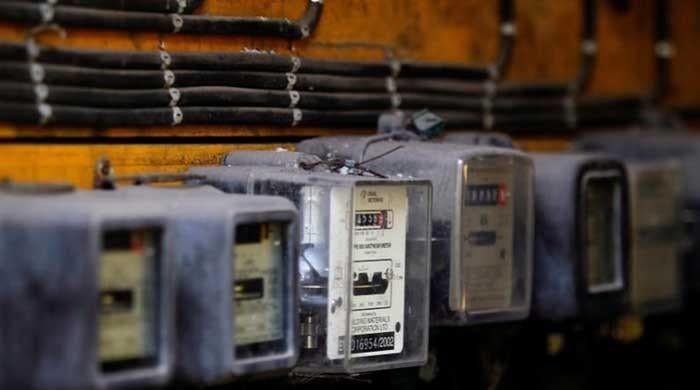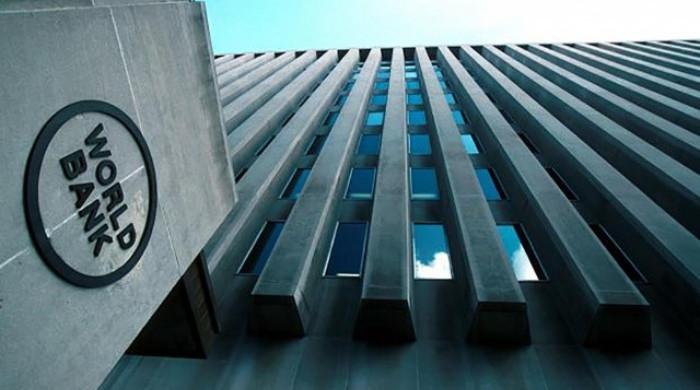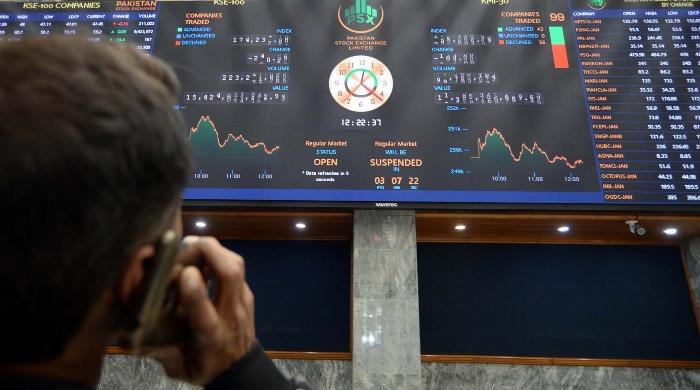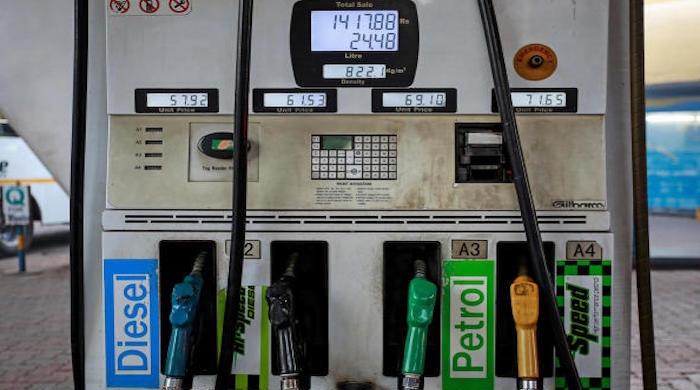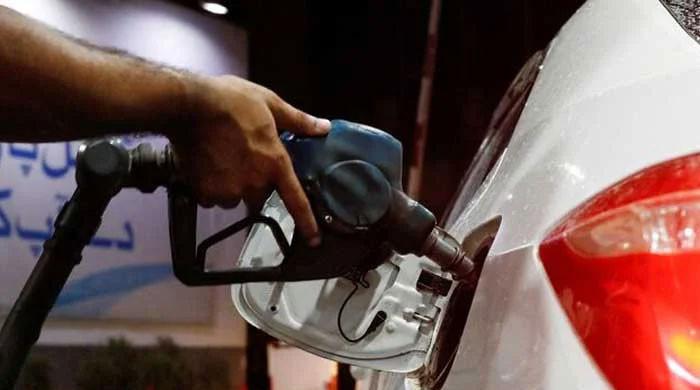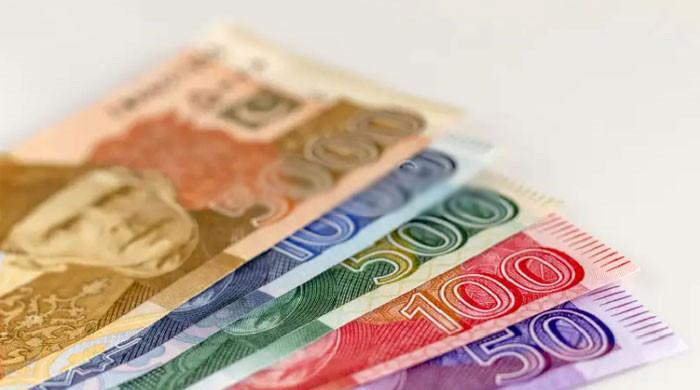Shaukat Tarin to present Economic Survey 2021 today without employment, poverty stats
Economic Survey to throw light on salient features of economic performance in outgoing fiscal year
June 10, 2021
- Economic Survey to throw light on salient features of economic performance in outgoing fiscal year.
- Total debt and liabilities stood at 95.3% of the GDP at the end of third quarter of 2020-21.
- Agriculture sector achieved its growth target; however, its growth performance was slower than last year.
ISLAMABAD: Finance Minister Shaukat Tarin will release the Economic Survey for 2020-21 today (Thursday). However, the document will not contain the latest figures on poverty and unemployment.
The Economic Survey for 2020-21 will throw light on the salient features of economic performance in the outgoing fiscal year. It is going to claim that total debt and liabilities (TDL) stood at Rs45 trillion by the end of March 2021 compared to Rs44.6 trillion at the end of June 2020.
This implies a 2% growth in nine months, which is the lowest ever growth of TDL in a single year in 15 years. Total debt of the government grew by 1.5% in this period.
Within external sources, multilateral and bilateral sources were the main contributors. Total debt and liabilities stood at 95.3% of the GDP at the end of third quarter of 2020-21 as against 103% of GDP in the comparable period last year. So total debt and liabilities decreased by almost 8% in one year.
The debt to GDP ratio improved mainly because of increase in nominal growth as inflation remained on higher side, so the nominal size of growth also jacked up. Secondly, the exchange rate appreciated, so it also helped the government to show improvement in debt to GDP ratio.
With provisional GDP growth rate of 3.94% and per capita income at $1,543 in outgoing fiscal year, the government did not use population census figures of 2017 approved by the Council of Common Interests, so the government missed around 9 million people for calculating per capita income in dollar terms. Official circles claimed that the population census required spadework from the National Institute of Policy Studies (NIPS). When this will be done, then whole series of per capita income will be adjusted accordingly.
The agriculture sector achieved its growth target; however, its growth performance was slower than last year as it grew by 2.8% in the outgoing fiscal year versus 3.3 percent in 2019-20.
Within the agriculture, the crop sector (comprising of Important Crops, Other Crops & Cotton Ginned) performance registered an average growth of 0.6% during 2013-18. During 2020-21, the crop sector posted a growth of 2.5%, which was lower than 5.5% growth achieved during 2019-20, mainly due to the decline in cotton output.
Important crops and livestock improved its performance, however, cotton ginning dragged growth downwards. Important Crops depicted 4.7% growth due to an increase in the production of wheat, rice and maize to reach their highest-ever level in history. The cotton crop succumbed to unfavorable weather, low water availability, and pest attacks. The decline in cotton production has therefore undermined the crop sector performance in 2020-21. Value added in livestock sector still grew by 3.1%.
The performance of Other Crops comprising minor crops like vegetables, fruits, condiments, oil seeds, etc., during 2020-21 posted modest growth of 1.4% as compared to last year (8.4pc). Healthy growth of vegetables, fruits, green fodder and oil seeds helped other crops sub-sector to almost attain the target of 1.5%. Overall, agriculture sector grew by 2.8%, which is lower than the envisaged target growth of 3.5% but significantly higher than the growth of 0.6% achieved during the last year.
Manufacturing sector recorded a high growth of 8.7% in the outgoing fiscal year as against contraction of 7.4% last year, with the high increase of 9.3% in large-scale manufacturing (LSM) to lead the overall growth of the manufacturing sector.
The Covid-19 pandemic particularly intensified economic woes of the industrial sector, which depicted major contraction last year.
LSM growth remained predominantly negative last year because of the Covid-related lockdown, severely damaging its recovery. The government’s effective handling and stimulus packages helped the sector to revive and post healthy growth.
Automobiles with the help of rising demand topped the list with 23.4% growth, followed by food & beverages (11.7%), petroleum & coke group (12.7%) and pharmaceuticals (12.6%) while electronics, engineering products and leather witnessed contraction by 20.8%, 25.5% and 38.3%, respectively. LSM grew by 9.3% based on July-March 2020-21 versus contraction of 5.1% in the same period of last year.
Services sector was worst affected by the Covid impact of last year owing to falling tourism revenues, lower mobility in the transport sector (air, rail, ships and roads), lockdown inflicted complete cessation of trading activities, closure of educational institutions, event management and community services and major burden on financial sector because of falling interest rates and business financing.
There are some services which have actually increased like health services, CSO operations and online digital content and online product delivery. This pandemic was unique in its unprecedented impact on services sector. However, with the easing of restrictions on mobility, overall services sector revived its growth to almost pre-pandemic level barring transport sub-sector. Overall, services sector posted 4.4% growth as against rare contraction of 0.5% last year, which provided major impetus to economic growth revival in 2020-21.
Its largest sub-sector wholesale and retail trade (WRT) posted 8.4% growth from last year’s contraction of 3.9%. Financial and insurance services also posted a healthy growth of 7.8% with a significant improvement on modest growth of 1.1% in 2019-20. Transport-related services still posted marginal negative growth of 0.6%, mainly because of Covid-related restrictions on air and road passenger traffic.
The investment-to-GDP ratio has declined slightly from 15.3% of GDP in 2019-20 to 15.2% in 2020-21. Foreign Direct Investment (FDI) contributed to this downslide. Fixed investment has increased by 5.8% in real terms and 13.8% in nominal terms. Private sector investment increased by 6.5%, notwithstanding a fall in FDI owing to global pandemic driven uncertain environment.
However, in real terms, private investment contracted marginally by 1.3% and that too driven by 68% fall in real terms in investment related to electricity and gas distribution sector where CPEC related projects of power sector are mostly completed.
Public sector investment has inched up to 3.8% of GDP in 2020-21 from 3.2% last year, while private sector investment declined from 10.6% of GDP in 2019-20 to 9.8% in 2020-21.
National Savings have improved to 15% of GDP in 2020-21 from 13.6% in 2019-20. Pakistan’s reliance on foreign savings has decreased as investment needs are financed by national savings.
Primary balance improved by 0.5% of GDP in the first nine months over comparable period of the last year. The adjustment is contributed primarily by decrease in primary expenditures by 1.2% of GDP.
Out of this, decrease in PSDP contributed 0.4% to the GDP while the rest of the contribution came from decrease in non-interest current expenditure. Provincial surplus remained at the previous year’s level of 0.9% of GDP and marginally contributed five% to improvement in primary balance.
Inflationary pressures, after remaining subdued for the first half, resurfaced since April, 2021. Robust measures for smoothing supply, removing market disruptions helped in reducing inflationary pressures even in the presence of accommodative fiscal and monetary policies in the first half.
The headline inflation (CPI) has seen a declining trend since Sept. 2020 before bouncing back since February 2020 and in April 2021, it reached 11.1%. The average inflation recorded at 8.6% during July-April 2020-21 as compared to 11.2% in the comparable period of last year.
The average non-food inflation remained tamed at 5.8% whereas, food inflation drove the surge in prices both in rural and urban areas. The global spike in the commodity markets are feeding into domestic inflationary pressures through imported raw material or imported finished products.
The previous inflationary pressures were primarily driven by non-core components like food and energy. However, recently core component also started to feel the heat of rising effective import prices.
Current account deficit remained surplus in the first 10 months, while exports also surged at brisk pace by taking advantage of massive rise in global prices of our exports. Growing economic activity and rise in global prices exerted pressure on imports.
Current account posted a surplus of $0.773 billion (0.3% of GDP) in the first 10 months (July-April 2020-21), as compared to a deficit of $4.7 billion in the corresponding period last year. Total improvement of $5.4 billion in the CAB is contributed by all components except deterioration in trade imbalance by $3.7 billion.
Trade imbalance widened because of increase in imports by $5 billion and offset by increase in exports by $1.3 billion. Increase in remittances contributed almost entire improvement of $4.5 billion. With estimated trade deficit at $25.2 billion and remittances at $29.1 billion, the current account surplus for 2020-21 is estimated at $200 million in 2020-21.
Originally published in The News




